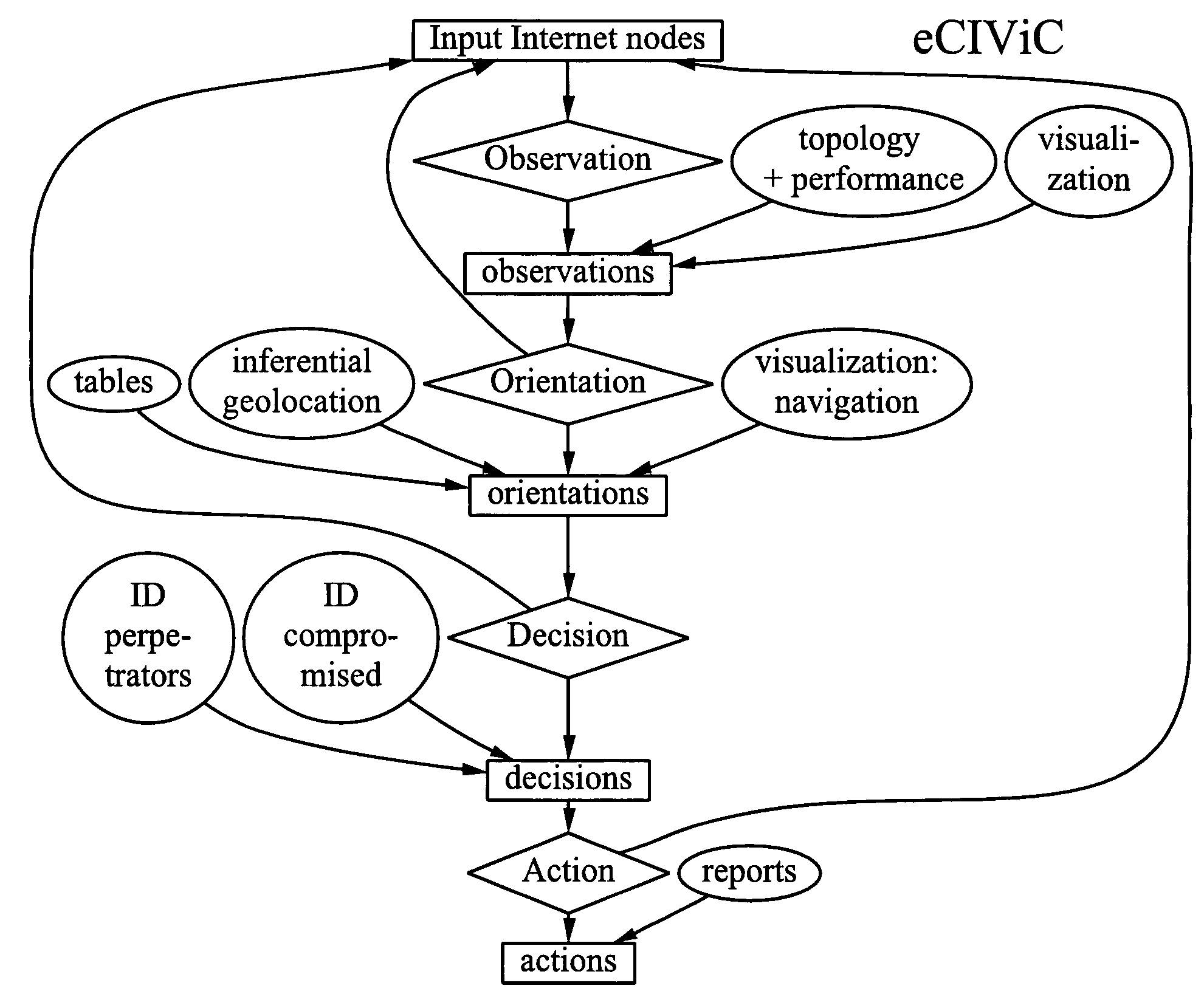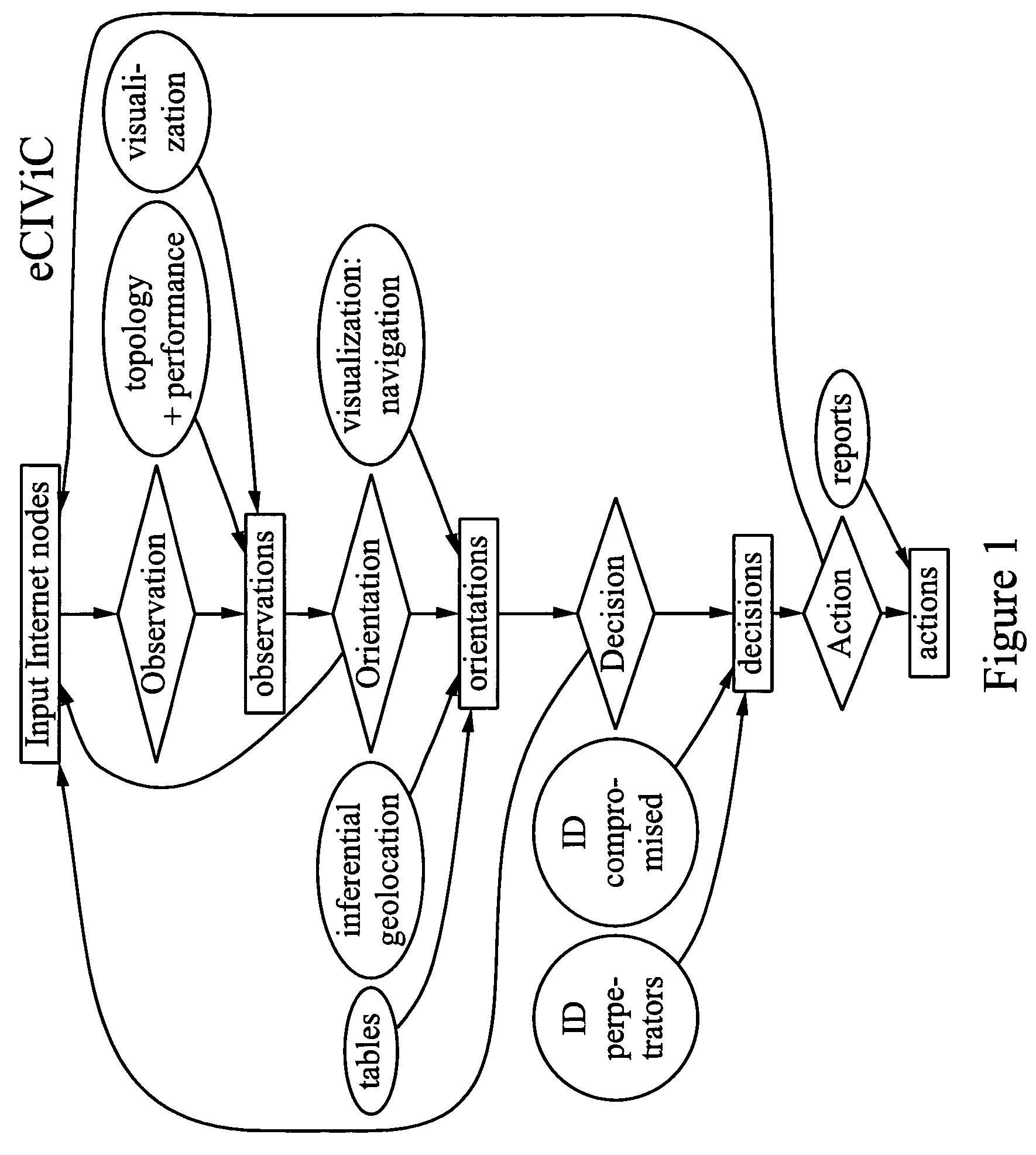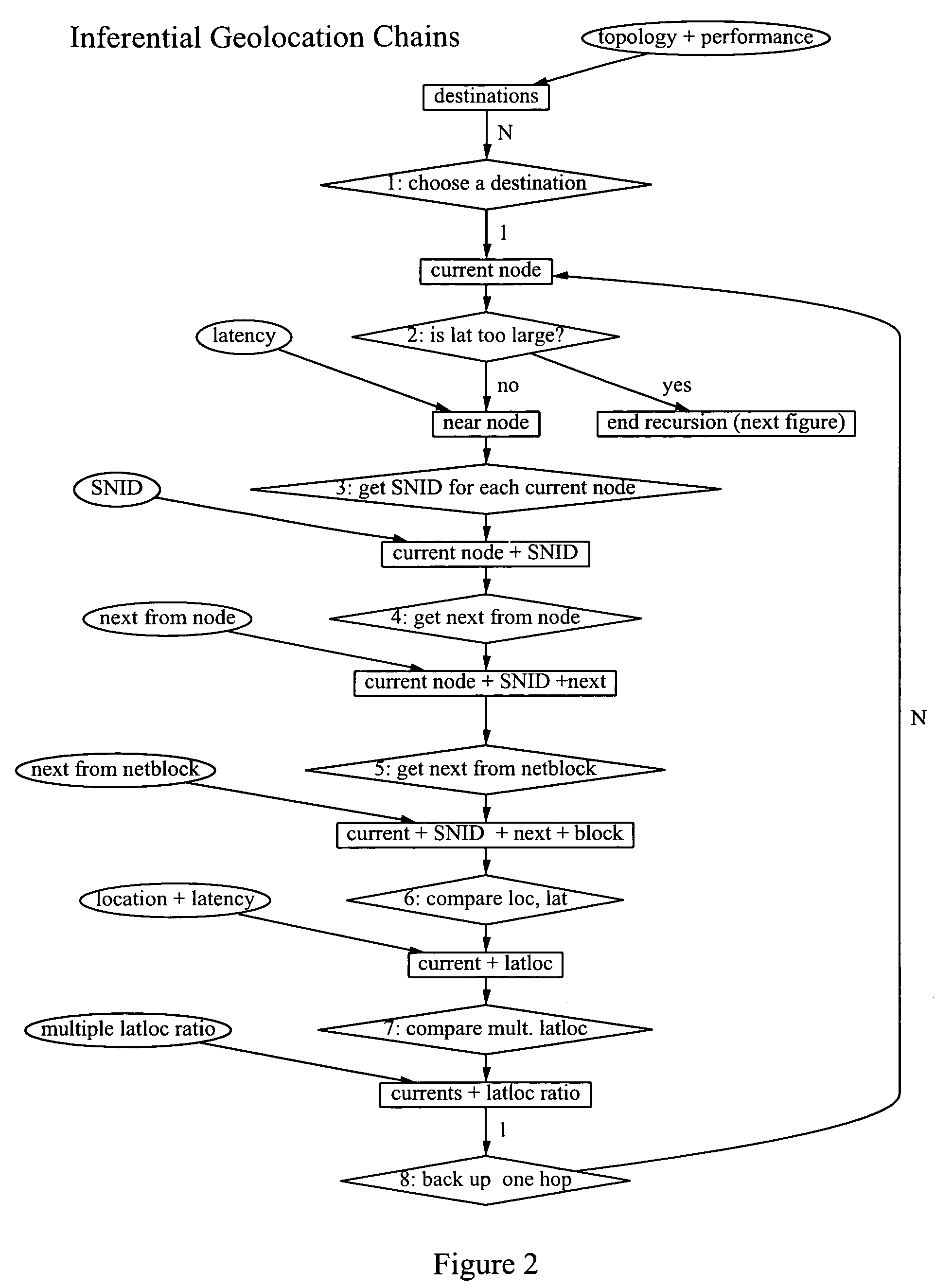Method and system for detecting distributed internet crime
a distributed internet and crime detection technology, applied in the field of computer network performance and risk management, can solve the problems of small percentage of phishing profits for phishers, low actual financial loss from phishing, and increased risk of internet fraud, so as to achieve better investigation, more focus, and wide view
- Summary
- Abstract
- Description
- Claims
- Application Information
AI Technical Summary
Benefits of technology
Problems solved by technology
Method used
Image
Examples
Embodiment Construction
[0038]The form of the OODA loop used in the present invention is illustrated in FIG. 1. The invention described is a method of observing Internet nodes involved in distributed electronic crime by means of data collection and visualization for orientation via patterns of similar Internet Protocol (IP) topology or performance, and possibly via inferential geolocation, in order to produce decisions about likely perpetrators or compromised nodes, which can be delivered to affected parties as actionable intelligence. Examples of such actionable intelligence about distributed electronic crime include clusters of nodes connected to the same ISP and all involved in phishing or spamming, where the ISP and the putative owners of each node are identified, along with their topological interconnections, and possibly plus their geographical locations. The discussion that follows uses phishing as an example of distributed electronic crime. However, it should be understood that the present inventio...
PUM
 Login to View More
Login to View More Abstract
Description
Claims
Application Information
 Login to View More
Login to View More - R&D
- Intellectual Property
- Life Sciences
- Materials
- Tech Scout
- Unparalleled Data Quality
- Higher Quality Content
- 60% Fewer Hallucinations
Browse by: Latest US Patents, China's latest patents, Technical Efficacy Thesaurus, Application Domain, Technology Topic, Popular Technical Reports.
© 2025 PatSnap. All rights reserved.Legal|Privacy policy|Modern Slavery Act Transparency Statement|Sitemap|About US| Contact US: help@patsnap.com



